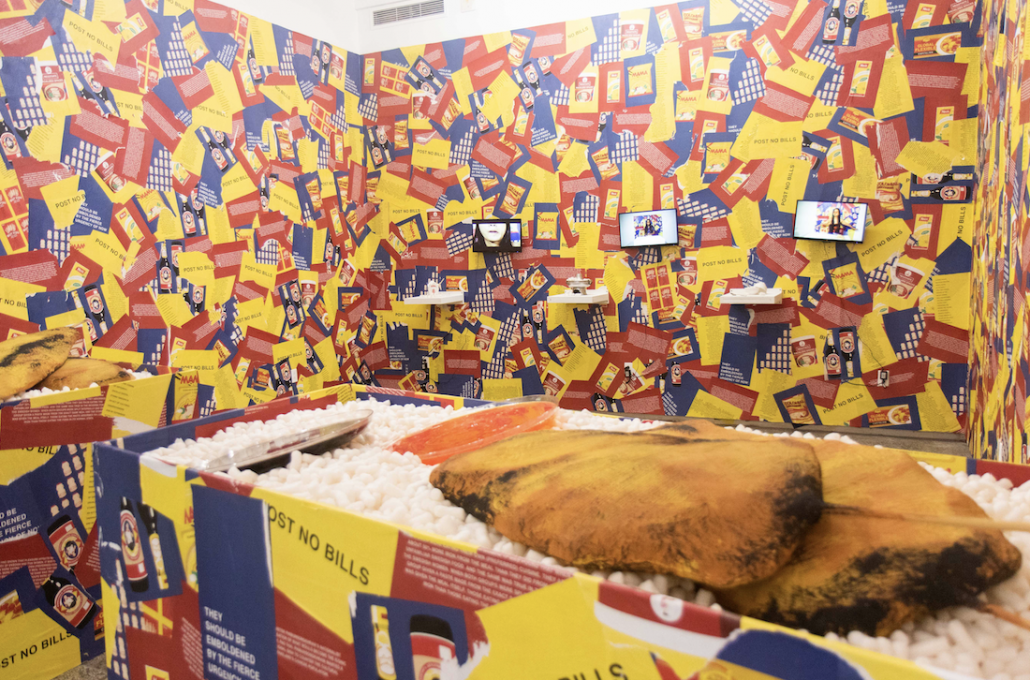Roski student artists discuss intention behind new exhibit

Emily Rudnick is a senior working on her BFA at the Roski School of Art and Design. Her newest exhibit, “Glory Days,” focuses on the deception of memory and is the newest addition to Roski’s Helen Lindhurst Gallery. The exhibit is one of many shows that will be held in the gallery this semester.
Daily Trojan: What is the focus of your art? Do you have a specific theme?
Emily Rudnick: My work has developed a lot in terms of conceptual theme. This show is centered around … how selective memory and nostalgia can cause us to misremember our past and how that affects how we view the present. This work came from a time when I was obsessively attached to the past, and I wouldn’t let go of a [previous] relationship. I was always wishing that I could go back, and I made this work as a means to put that relationship to rest. Selective memory can cause us to romanticize the past, and [we can] forget the bigger picture … It keeps us from growing in the present.
DT: How would you describe your current work?
ER: I would describe my work as reflective. I got into this flat, two-dimensional graphic painting because I have a high respect for artists who can paint like a kid would paint but it still looks refined … and for a while I felt like painting had to be all representational, and I’m one of the only people in the painting emphasis that doesn’t do representational work.
DT: Can you explain the process behind this exhibit and “Glory Days”?
ER: [The fabric centerpiece] was the main motivation to apply for the show before I made any of the paintings … All the photos are either photos of me or photos I took of various specific times in my life that this show is reflective upon. I pulled all these photos — it’s not like photography, a lot of [the photos] are just taken with an iPhone … a lot has changed since then.
I was working on the embroidery before I even knew what I was going to do with it. Something was just dragging me to do it … and I didn’t know what it was. And when I got this show, it was perfect because I knew what it was going to be.
DT: What do you want visitors to see when they walk in here?
ER: [“Glory Days”] is hyperpersonal. But I’m hoping that thematically, when people look at the symbols and the text, they can immediately think of a moment in their own past, and they can take away what they may have not even been looking to take away from art or from experience … I want people to be able to interpret this in a way that is personal to them.
Artist and designer Bonita Nongluk, a fifth-year senior majoring in business administration and art with emphasis in sculpture and design, brings her artwork to the Helen Lindhurst Gallery this February in her exhibit “Culinary Contact Zone,” featuring brightly-colored advertisements, giant chicken satays, video and edible arrangements for visitors.
DT: When did you first start creating art?
Bonita Nongluk: I started at USC as an English major. I always had a huge fascination with words, the power of language, especially because English is my second language. And I guess some of that is a big part of the show. And then I went to business. I sort of had that mid-life crisis where I realized that I had to make money, and then I was like, “Maybe I can still do what I love and make it acceptable in this late-stage capitalist world.” So I did design. I’d been designing since I was 15. I’m still doing that professionally just to pay the bills, but I took sculpture my sophomore year, and I haven’t looked back since. There’s nothing else I could do with my life.
DT: Do you enjoy designing?
BN: No, I don’t. And here’s the thing: I reprioritized the most important things in my life, and I realized that the most important thing in my life is to make art. The big difference between design and art is that design will solve the problem, but art will ask the questions. And I’m a curious fucking person. I just don’t think that I want to make other people money anymore … I’ll put in my time to go to graduate school and get my MFA and make art full time and be a professor and hopefully advocate for other artists who are women of color, who are quite disadvantaged within that institutional context. But that’s a few years down the line.
DT: How would you describe your style?
BN: Right now I’m focusing on absurd, crazy pop art. It goes along with the idea of over-layering communication, always doing too much. It’s a little extravagant, but I can do it.
DT: What message do you want your art to impress upon viewers?
BN: You cannot talk about pop art without talking about the rampant consumer culture. I am a social artist. I am an installation artist. I want whatever I do to interact with the space it’s in, with the context which it’s in. I want you to be in the space, completely.
Rudnick’s and Nongluk’s works are on view to the public through Feb. 14 at Watt Hall.

